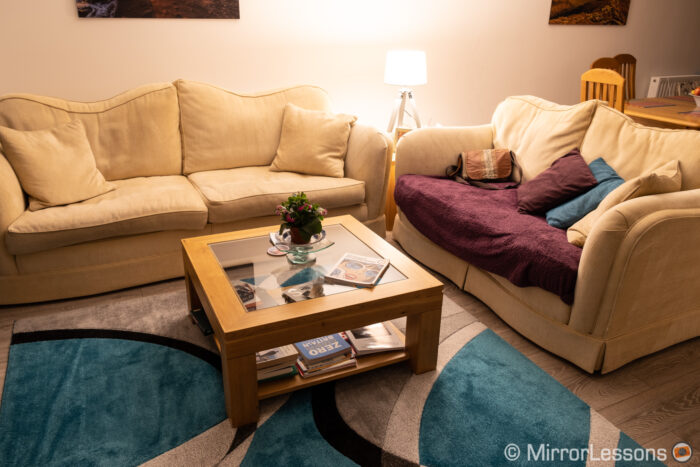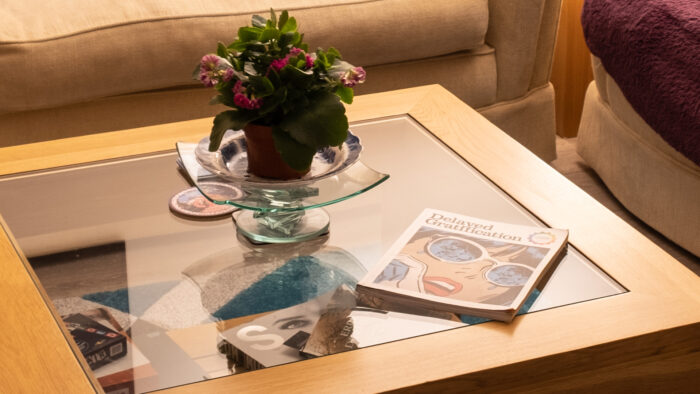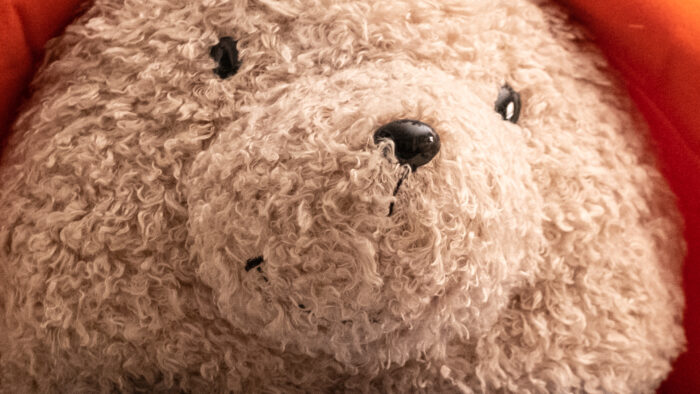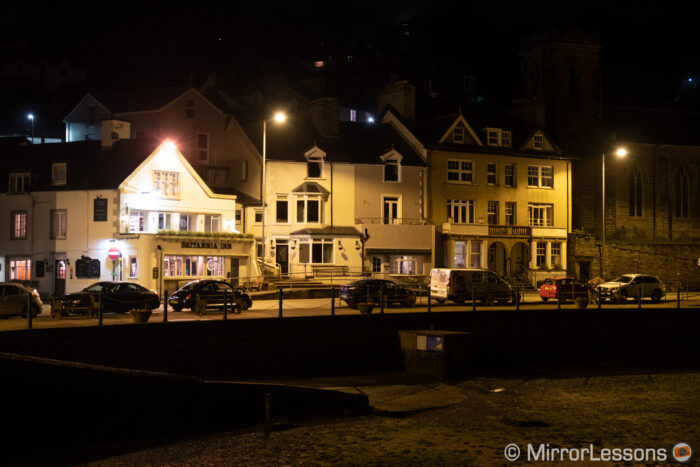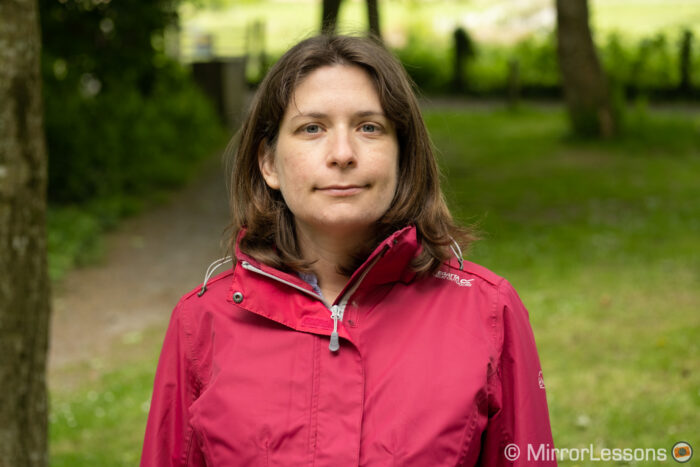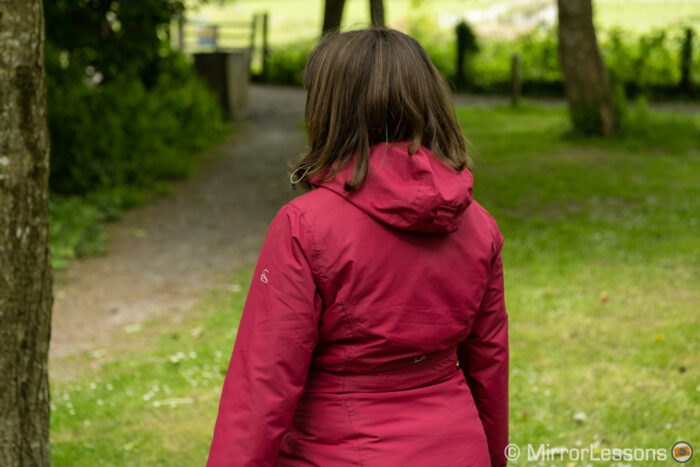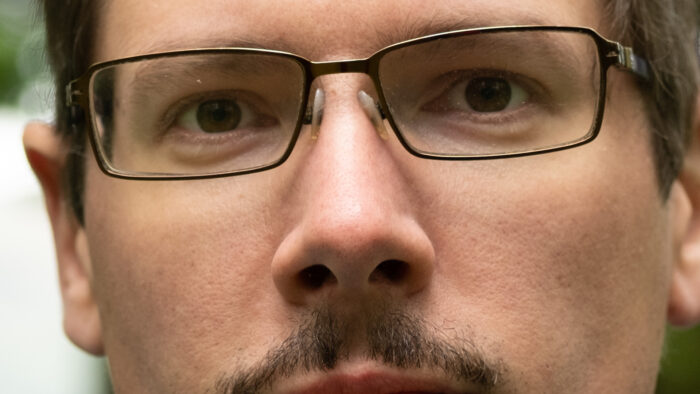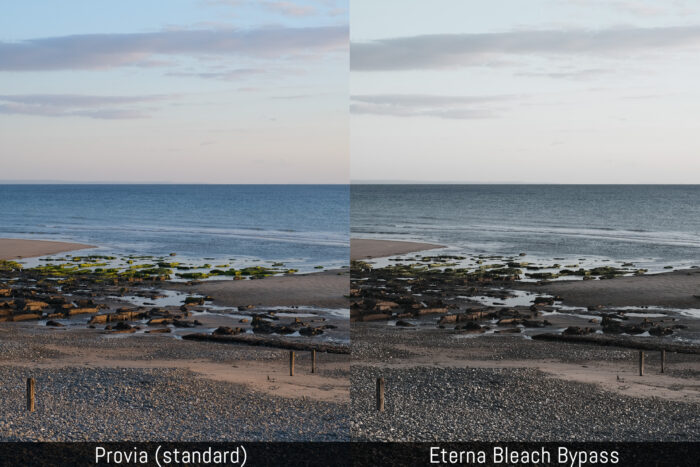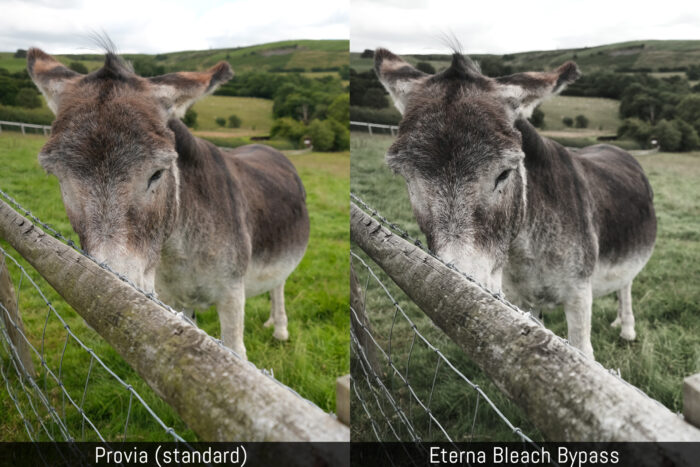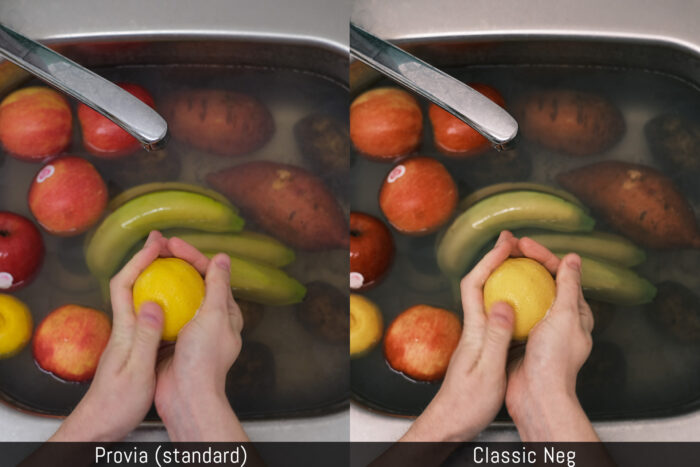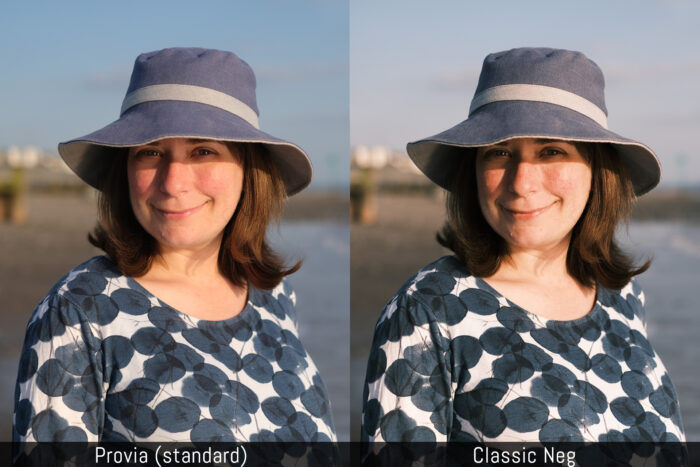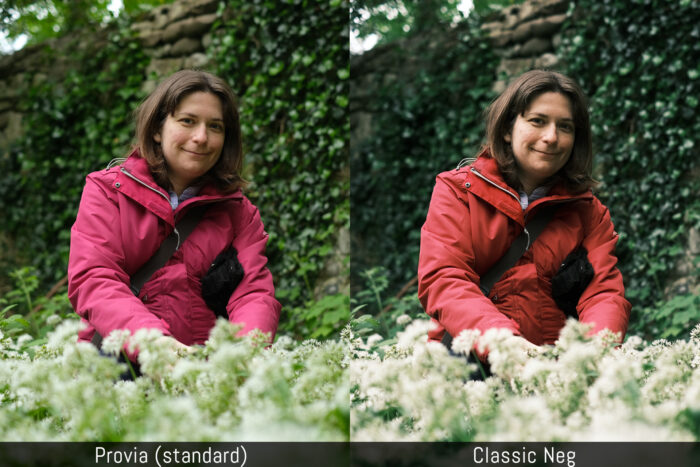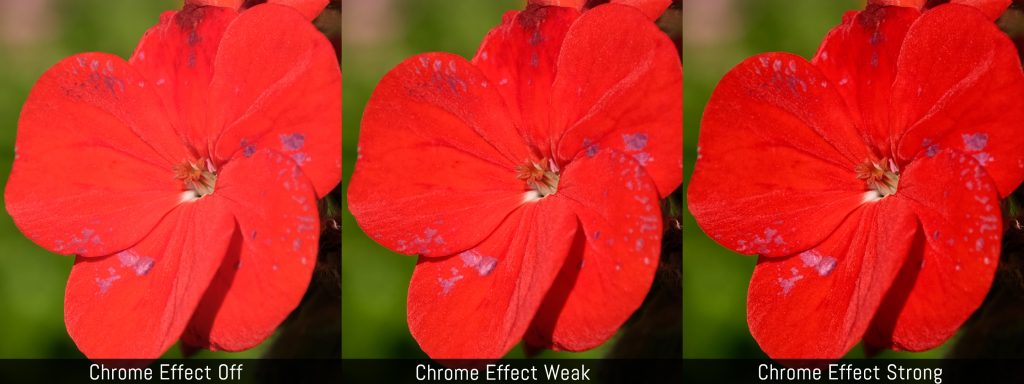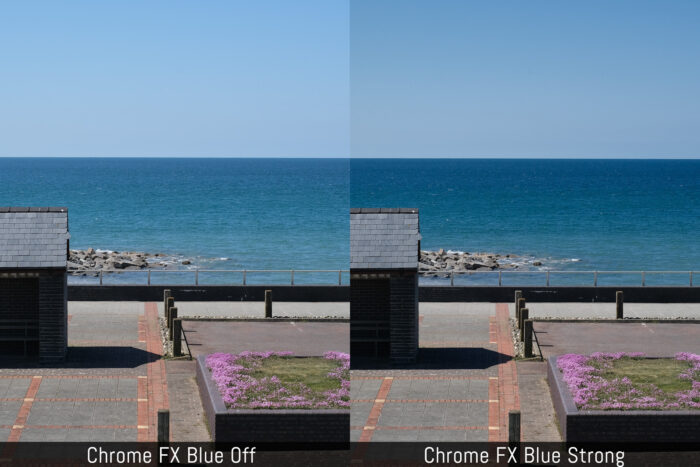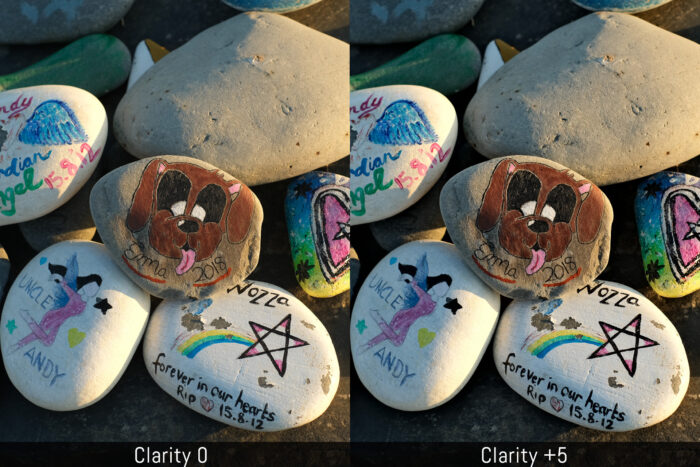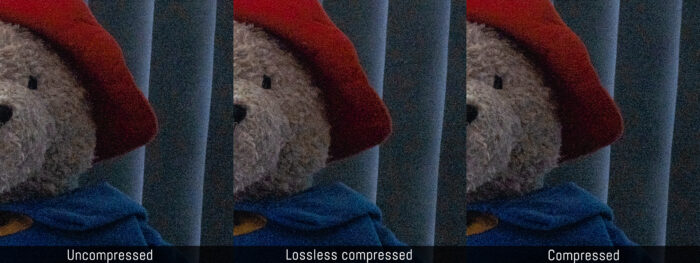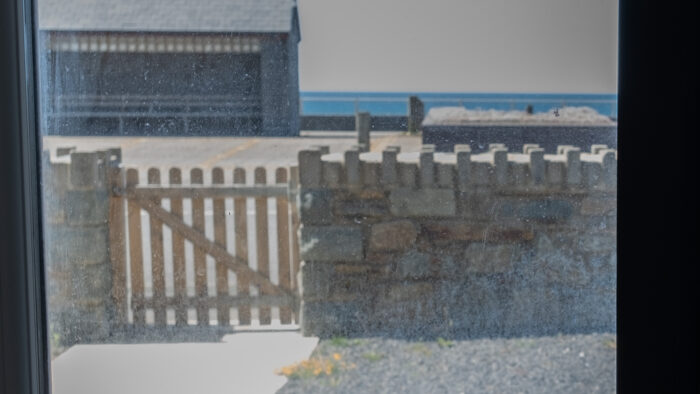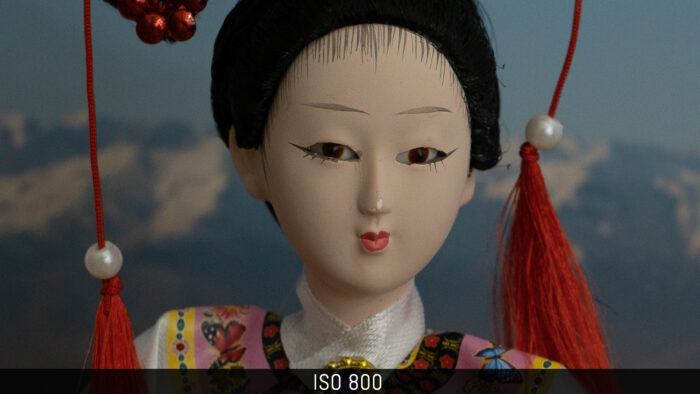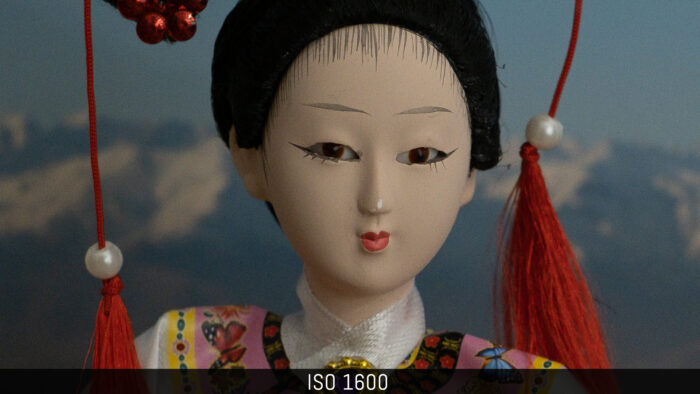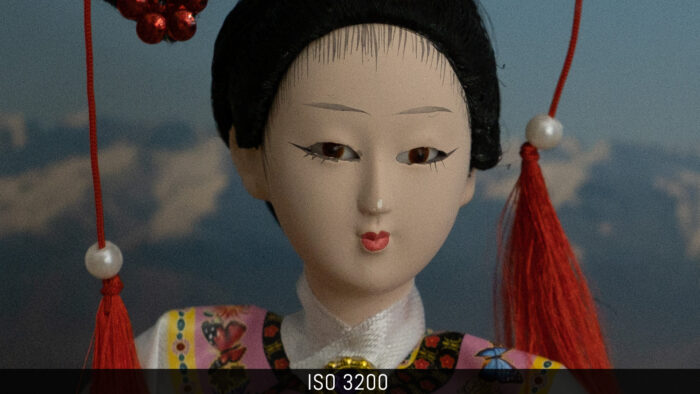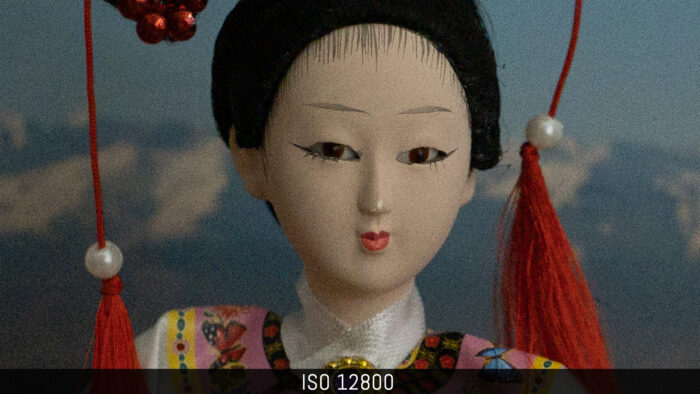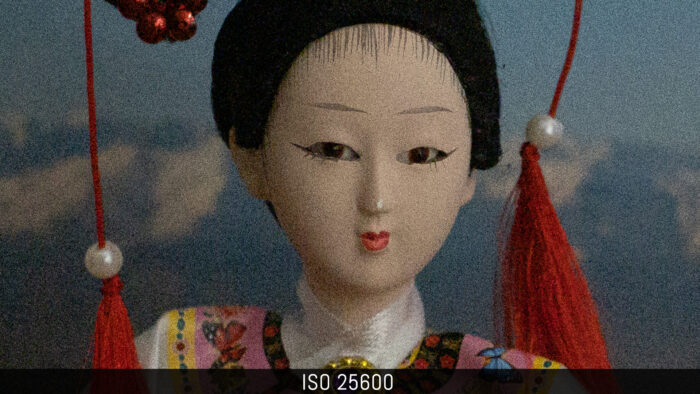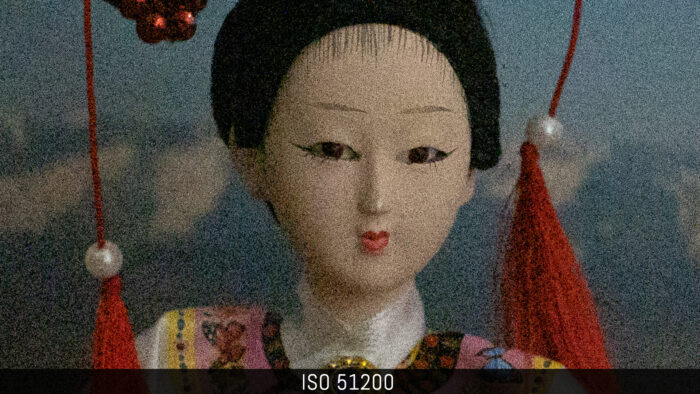Over the years, Fujifilm has gone from catching up in various departments such as autofocus, video, and overall speed to equalling if not surpassing some of its direct competitors.
The new X-T4 follows the same path. It fixes some of the final things that needed to be addressed (IBIS, battery) and further improves the performance, which makes this new model one of the most exciting and complete APS-C cameras you can find today.
It doesn’t replace the X-T3 (for now), which means that its predecessor remains on the market at a lower price. Let’s see how they compare.
What the X-T3 and X-T4 have in common:
- 26.1MP APS-C X-Trans IV BSI CMOS Sensor
- X-Processor 4 image engine
- ISO 160 to 12800, pull 80 and push 51200 (extended values)
- 4K Video recording up to 60p, F-Log, HLG
- Up to 30fps of burst shooting with the electronic shutter
- 1/8000s (mechanical shutter) and 1/32000s (electronic shutter)
- Min. shutter speed 15 minute (T mode)
- EVF with 3.68M dots and 100fps refresh rate
- weather sealing
- Two SD Card Slots (both UHS-II)
- WiFi and Bluetooth
- USB Type C port with charging and power delivery
Editor’s note: this article has been updated with feedback for each section following our real world experience. We’ve also added an in-depth video review and extra information at the end.
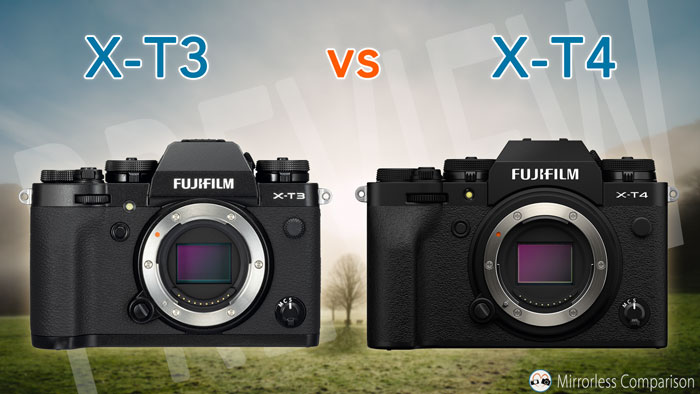
Ethics statement: the information shared in this article is based on our personal experience with the X-T3 and X-T4. We were not asked to write anything about these cameras, nor were we provided any compensation of any kind. Within the article, there are affiliate links. If you decided to buy something after clicking the link, we will receive a small commission. To know more about our ethics, you can visit our full disclosure page. Thank you!
TABLE OF CONTENT
– One Minute Video Recap
1. Five Axis Image Stabilisation
2. Larger Battery
3. Slightly Larger Dimensions
4. LCD Monitor
5. Shutter Unit and Continuous Shooting
6. Autofocus Software
7. Image Quality Settings
8. Video Recording
9. Menu and Customisation
10. Price
– In-Depth Video Review
– Conclusion
The 1 Minute Video Recap
If you want a quick glimpse of the main differences between these two cameras, check out the video below!
1. Five Axis Image Stabilisation
This is the biggest upgrade to the X-T series. Up until now, Fujifilm had produced only one camera with in-body stabilisation, the X-H1. At the time, their argument for the bigger body was to accommodate the space needed for the sensor shift unit.
Less than two years later, the X-T4 incorporates a smaller and lighter unit (30% decrease in size and 20% less weight according to Fujifilm). Instead of springs, the new mechanism works with magnetic force and has an improved structure to absorb shock. The new gyro sensor is supposed to improved the detection accuracy by 8 times in comparison to the X-H1.
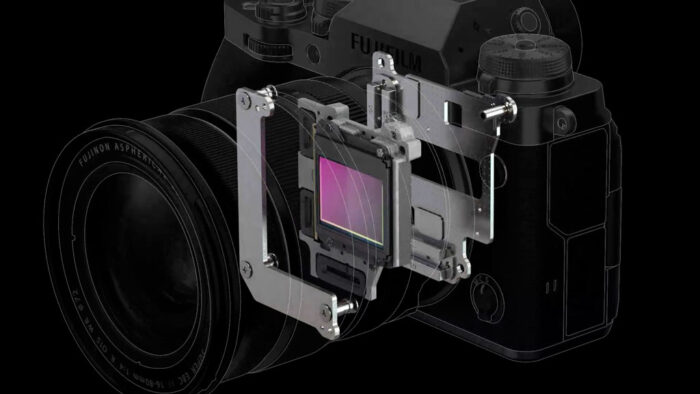
Compensation works on 5 axes (roll, pitch, yaw, x and y) and up to 6.5 stops with a good number of Fujinon XF lenses (18 out of 29 according to Fujifilm), whereas others are between 6, 5.5 or 5 stops. You can view the full list on the Fujifilm website.
The stabilisation unit works on its own with non-stabilised lenses, or in combination with optical stabilisation on OIS lenses: 3 axes on the sensor (roll, x and y) and two on the lens (pitch and yaw), except for the 80mm 2.8 Macro where it is 1 axis on the camera (roll) and four on the lens (pitch, yaw, x and y).
The internal image stabilisation works for video too and you can add software stabilisation (electronic), which Fuji calls DIS (Digital Image Stabilisation). The field of view is cropped (1.1x), but the degree of stabilisation is improved. There is also a new IS Boost mode that is designed to stabilise the image for fixed shots when you’re not using a tripod.
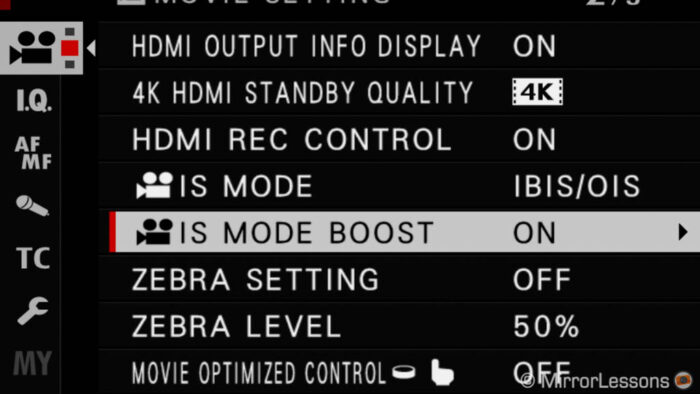
The X-T3, as you may already know, doesn’t have any sort of stabilisation. You have to rely on lenses with OIS, or external supports.
Fuji X-T4 IBIS Review: how well does it perform?
I managed to get a few decent results with the X-T4 at 1 second (and one photo at 2s but that was a one off). However if you want perfect sharpness and a decent keeper rate of 60/70%, you should not go slower than 1/4s.
I didn’t find a real difference in using a lens with or without optical stabilisation with short and mid focal lengths.
With a telephoto lens using IBIS + OIS, you can get decent results at 1/4s, but you should stay above 1/8s for a better keeper rate.
Has IBIS improved over the X-H1?
The results above are very close to what I got with the X-H1 two years ago. Also, if you use a lens with optical stabilisation alone on the X-T3, you won’t be too far off.
For example a lens like the 18-135mm f/3,5-5.6 gave me decent results around 1/2s when used on the older X-T2.
Some lenses might perform better than others, but overall the IBIS advantage versus optical stabilisation alone is minor. Of course, with IBIS on the X-T4, you always have stabilisation with you, no matter which lens you use (OIS or non OIS), and that is the main takeaway.
Fujifilm X-T4 IBIS Test for Video: is the jerkiness gone?
When I tested the X-T4 in May, I found it produced a lot of jerkiness when panning, as well as a bit of jittering for static shots. In the meantime, Fujifilm released firmware 1.02 to fix this issue. Indeed the jerks, although not completely gone, are more subtle and if you’re careful when you’re starting your movement, you can avoid them. The jittering is also reduced for static shots but not completely gone.
Digital stabilisation can make the footage more stable at times, but in others it doesn’t really improve the performance. It’s a bit inconsistent and it’s a bit unclear on when to use it and when to avoid it.
IS boost can help with more than just static shots. Like DIS, it can be a bit unpredictable, but it can also reduce the amount of shakes with complex movements. My advice is to do some tests of your own to see which setting do you prefer.
Overall the performance of the X-T4 is not bad. It’s not the best on the market but now that the firmware has reduced the amount of jerkiness, you can get pleasant hand-held shots. They won’t look perfectly stable, but they can definitely look good enough if you don’t have the chance to use an external stabiliser or tripod.
Note: you can see some examples in our Video Review at minute 30:29.
2. Larger Battery
Fujifilm has used the same battery type, the NP-W126, for a long time. It then introduced the S variant (NP-W126S) that improved the performance a little, but it remained inferior to the better batteries proposed by other systems (Sony and Olympus).
The new battery introduced with the X-T4 (NP-W235) has a higher amperage of 2350mAh, which is almost double the capacity of the previous one (1260mAh).
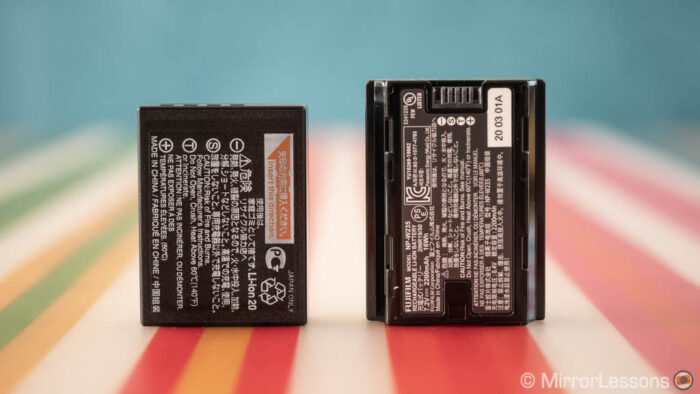
By CIPA standards, the X-T3 can take around 390 shots with a fully charged battery, whereas the X-T4 can manage around 500 shots.
In addition to the Normal and Boost modes, Fuji has added a new Economy mode that can save even more power. You can also see the battery age in the menu.
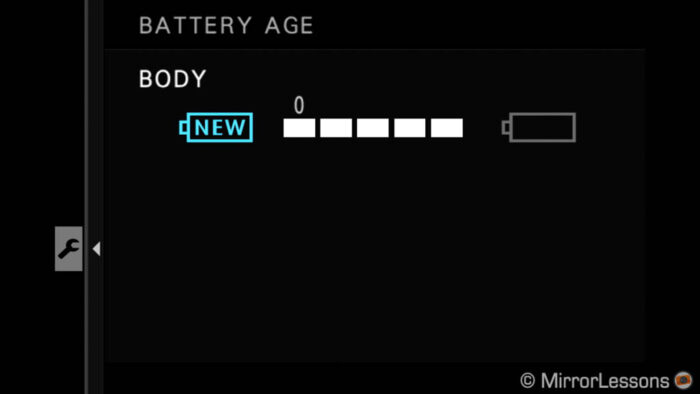
There is a new battery grip designed for the new camera, the VG-XT4, to accommodate two NP-W235 batteries. Both cameras can be powered or charged via USB. It’s worth nothing that the X-T4 doesn’t come with a battery charger (unlike the X-T3).
Fuji X-T4 Battery Life: how much better is it?
With more than 4,000 shots taken with C-AF, 15fps and 20fps burst using the EVF, and a few video clips in 4K/50p and Full HD/200fps, the battery icon on the X-T4 showed two bars left out of five. This is definitely a great improvement (I would have had to swap batteries at least once with the X-T3).
For video, the X-T3 recorded about 58 minutes in 4K/50p before exhausting the battery. The X-T4 gave me an extra half an hour. (Both cameras were set to MF, IBIS off on the X-T4).
3. Slightly Larger Dimensions
Although the stabilisation unit is smaller than the one found in the X-H1, Fujifilm still had to make some room for it in comparison to the X-T3, and that led to a small increase in size and weight. But that also allowed them to include a bigger battery, so overall I would say it is for the best.
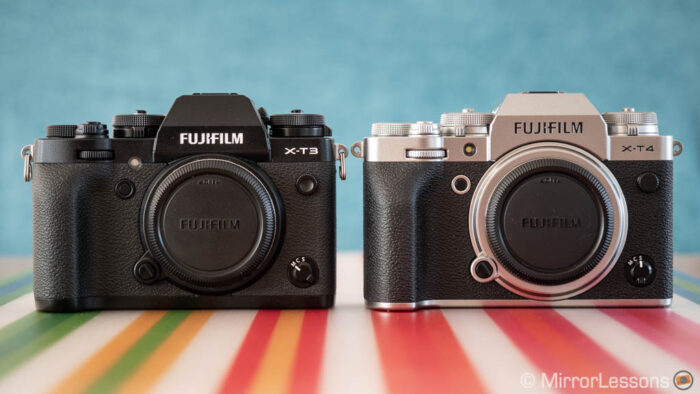
As you can see below, the width and weight have increased a little, and the new camera is thicker as well.
- X-T3: 132.5 x 92.8 x 58.8mm, 539g
- X-T4: 134.6 x 92.8 x 63.8mm, 607g
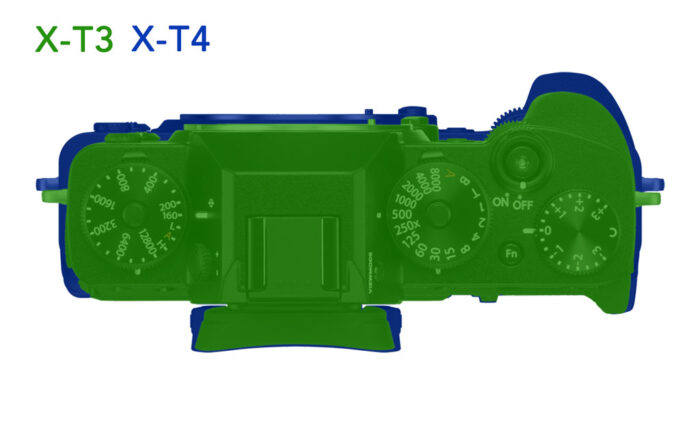
What looks like an insignificant increase in size and weight does make a difference when you hold the two bodies separately. The new model feels heavier and the bigger grip on the front adds to the sensation of holding a larger camera. That said, it still lacks a more prominent grip for lenses such as the 100-400mm.
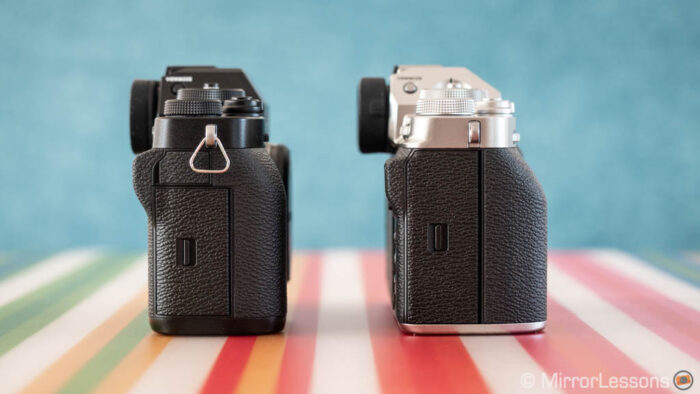
The button and dial layout are the same for the most part. The only differences are how some buttons are marked on the body, the AEL and Q buttons have switched positions and the AF-ON button is larger and more rounded. The other buttons, including the AF joystick, feel about the same.
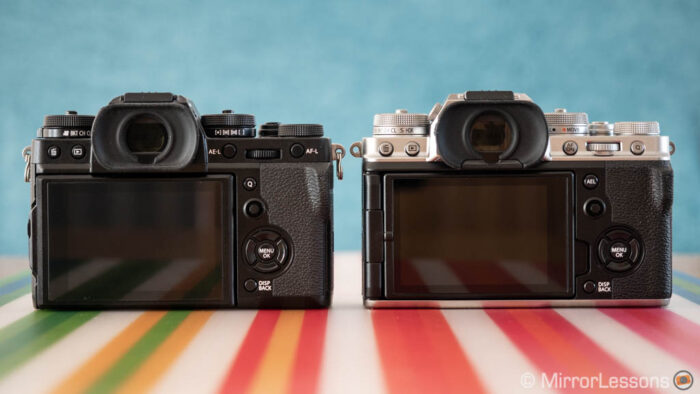
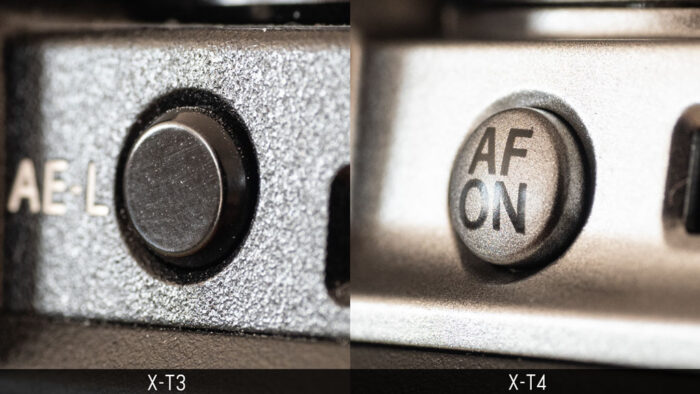
Most of the physical controls will be familiar to X-T3 users. The only noticeable change is the sub-dial under the shutter speed dial that doesn’t control metering anymore, but allows you to switch from still to video mode which is handy.
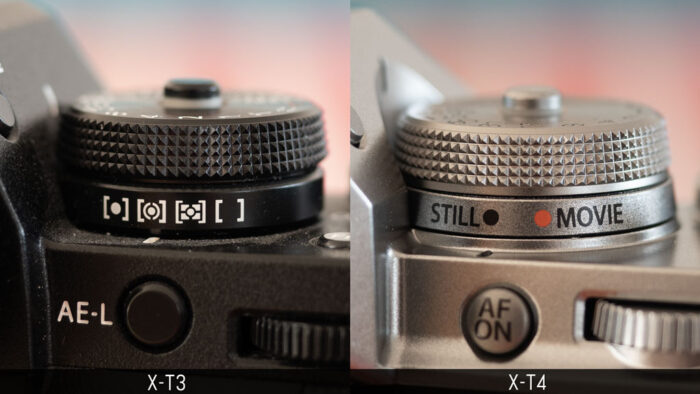
I found the dials a bit more firm and precise on the new camera. The exposure compensation dial remains difficult to turn with one finger. It is probably designed this way as a precaution to avoid changing the value by mistake.
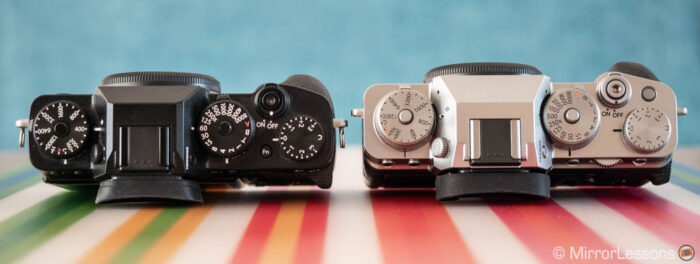
The rear command dial has a slightly different design and sticks out a bit more on the X-T4 which makes it easier to turn. When pressed, both front and rear command dials feels more reactive than on the X-T3.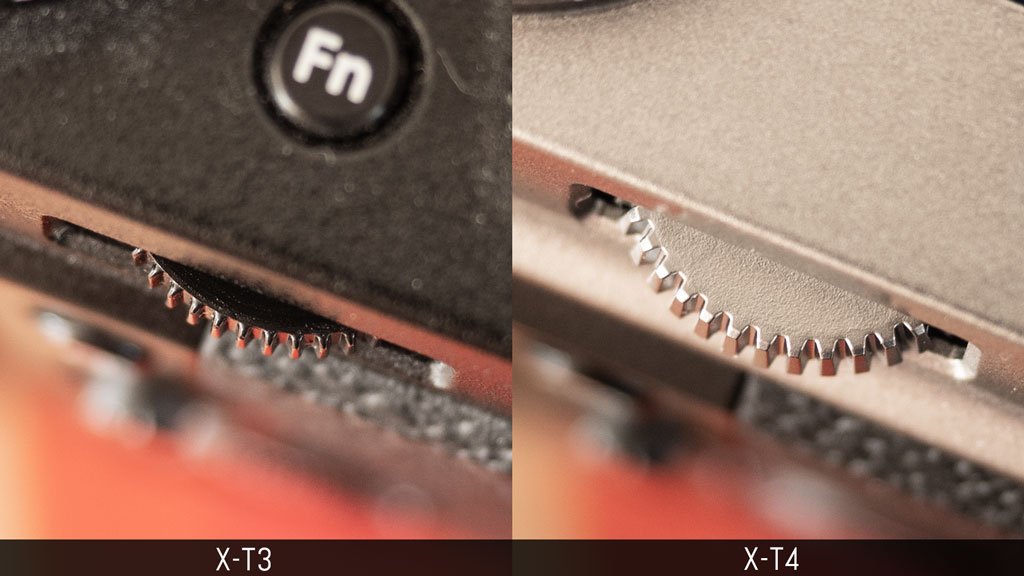
4. LCD Monitor
The X-T3 has an unusual 3-way tilting mechanism: in addition to tilting up and down, it can be oriented by about 70˚ when working in vertical orientation.
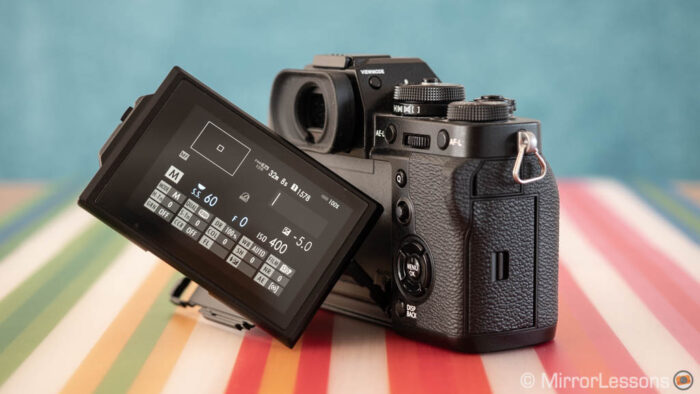
The LCD on the new camera also has more resolution (1.62M vs 1.04M dots) and has a multi-angle mechanism, which is found on many other cameras and gives you more possibilities including a 180˚ rotation to the side.
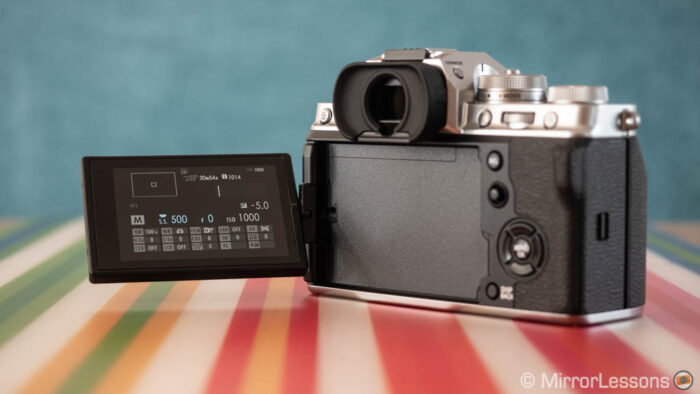
The multi-angle solution is useful for v-logging and video in general. For still photography, I prefer the X-T3 solution because the screen never sticks out from the camera body.
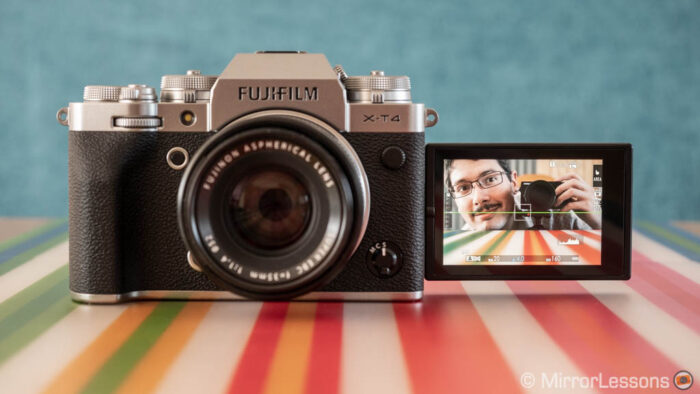
Be aware that with accessories connected (microphone, headphones etc.) on the X-T4, the rotation of the screen is blocked when fully flipped to the side.
Both screens are touch sensitive and allow you to perform different operations such as taking a shot, moving the focus point, selecting specific settings and so on. Touch sensitivity is about the same when it comes to precision and reactivity, and so are the various actions you can perform with it.
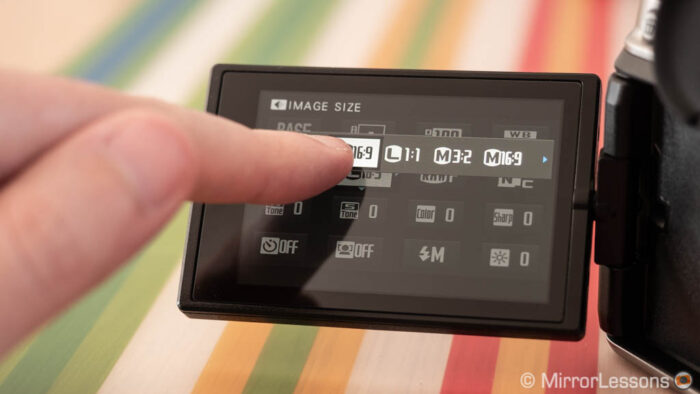
The Power Management setting offers more options for the Boost mode: you can prioritise brightness by reducing the frame rate (useful for low light work) or the resolution.
5. Shutter Unit and Continuous Shooting
The X-T4 features a new shutter mechanism that is rated at 300,000 actuations and has a quieter sound. Fujifilm never disclosed this on the X-T3 (probably 200,000 but it’s a guess).
The X-T4 shutter has a new design that allows it to be faster, reaching a maximum speed of 15fps in continuous mode (with AF/AE tracking). The shutter lag is 0.035 seconds. (Imaging Resource calculated the one on the X-T3 at 0.051s).
With the mechanical shutter, the X-T3 can go as fast as 11fps. If you want a live view (with blackouts), you need to decrease the speed to 5fps, whereas the X-T4 can do this at 8fps.
If you need faster burst speeds, note that both cameras can go up to 20fps with the electronic shutter, or 30fps with the electronic shutter and crop mode (1.25x). Furthermore, the burst works with live view and no blackouts (like the Sony A9 series). A Pre-shot mode is also available: it starts loading images in the buffer memory before the shutter button is fully pressed.
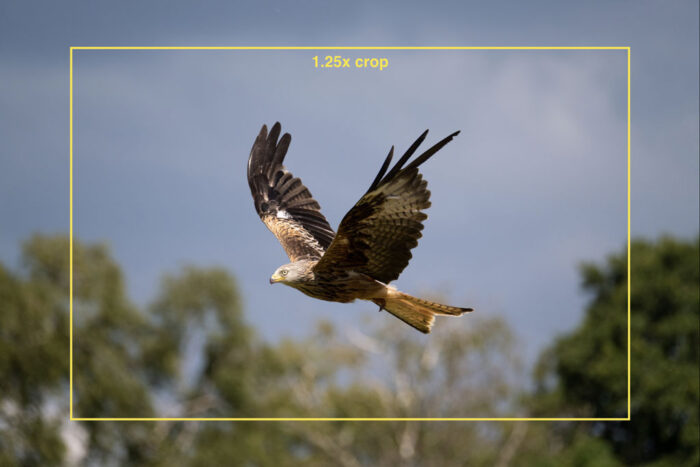
I was curious to see if Fujifilm had tweaked the sensor readout speed on the X-T4, but my rolling shutter test shows it is about the same on the two cameras.
How good is the buffer memory?
The two cameras have the same buffer when using similar speeds (11fps and 10fps): they last between 5s and 6s before slowing down to 6fps with Lossless Compressed RAW. With JPG Fine, they never slow down.
At 15fps, the X-T4 keeps the full speed for about 3 seconds then slows down to 7fps (RAW). With JPG, it can fire up to 15 seconds before taking a short break every two seconds.
I used a Panasonic V60 UHS-II card for the test (250MB/s declared writing speed).
6. Autofocus Software
The X-T4 has a new algorithm where in addition to distance, colour and shape data are also analysed to improve accuracy. Tracking has been improved and Fujifilm says that the success rate should be two times more accurate in comparison to before. Low light sensitivity is -6Ev (-7Ev with the 50mm f1).
The speed has increased, with the company claiming a locking speed of 0.02s, which is the same world’s fastest rating claimed by Sony for the A6600. Face and Eye detection have the same tweaks introduced to X-Pro3.
Note: with firmware 4.0, the X-T3 has received the same capabilities of the X-T4, including the 0.02s locking speed, the tracking and face/eye algorithm, and the low light sensitivity (previously it was -3Ev). This firmware arrived after I made my test and published this article.
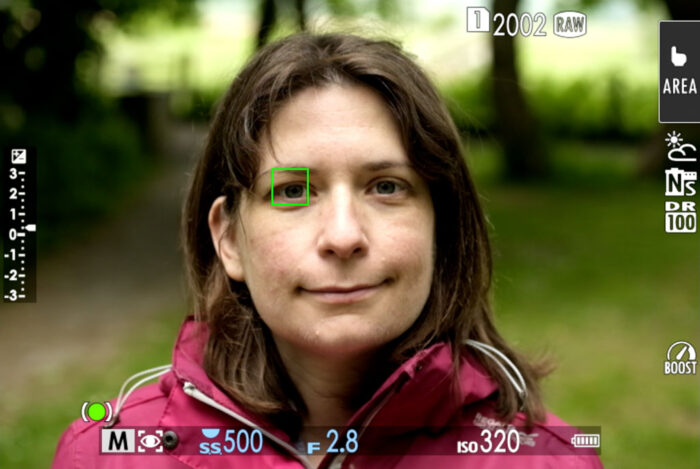
The technology inside the cameras is the same: they both have a hybrid system with contrast and phase detection points (117 or 425 areas depending on the settings used).
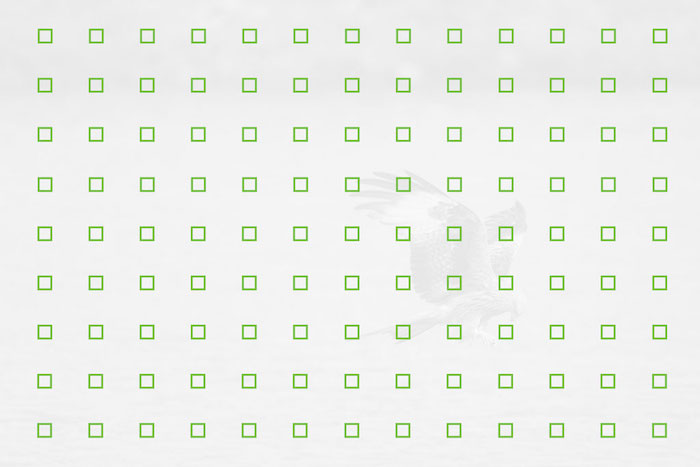
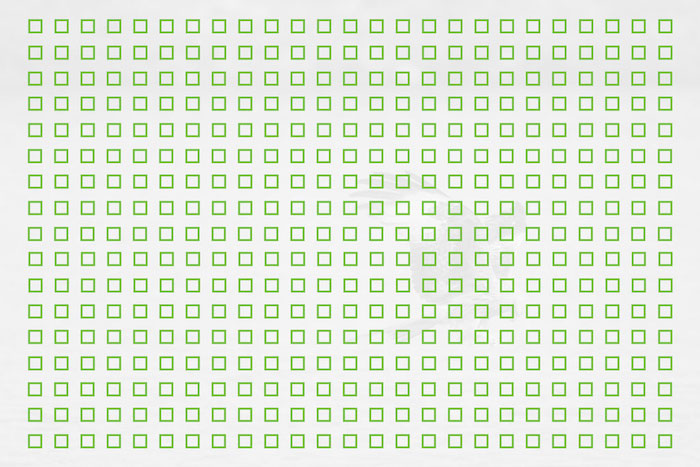
The focus areas you can select are also the same: single point (6 sizes available), Zone (3×3, 5×5 o 7×7 group), Wide Tracking or ALL (switch between all the modes with the rear command dial).
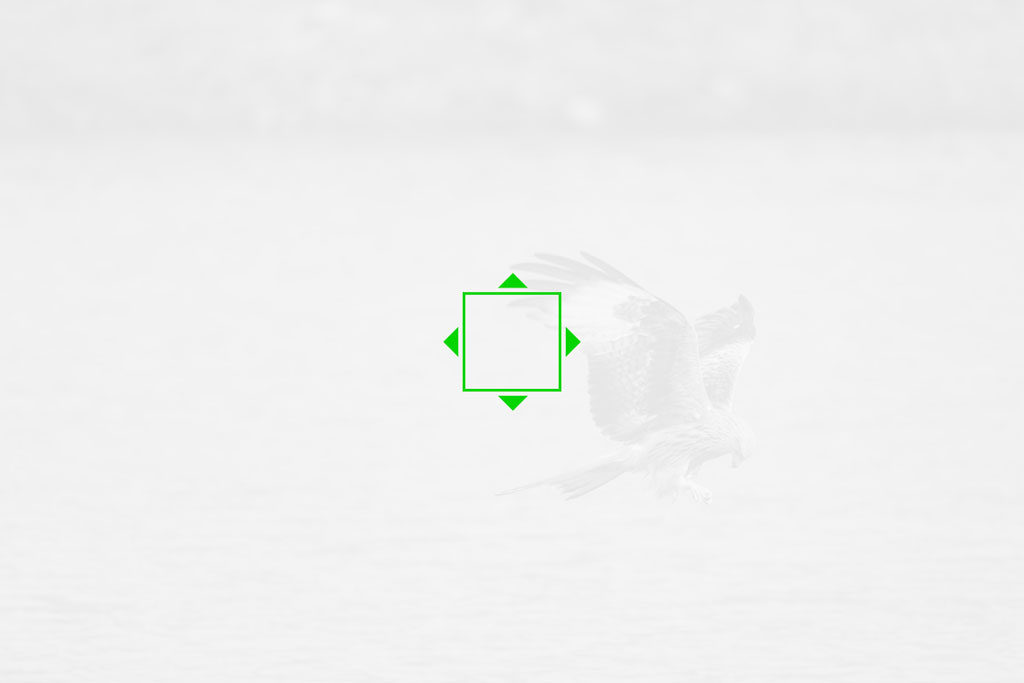
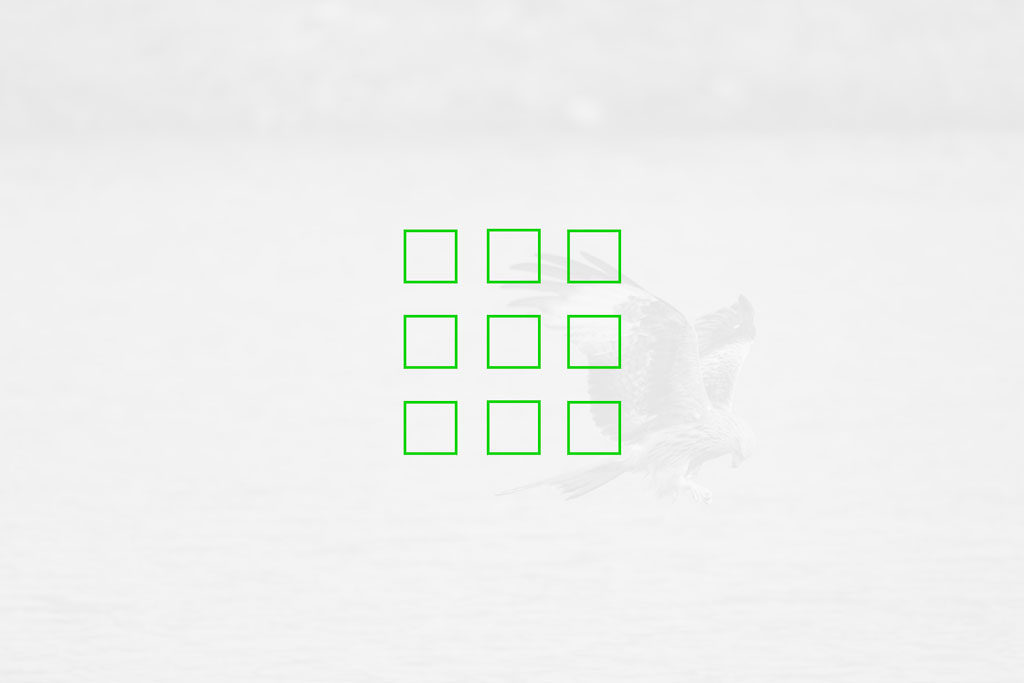
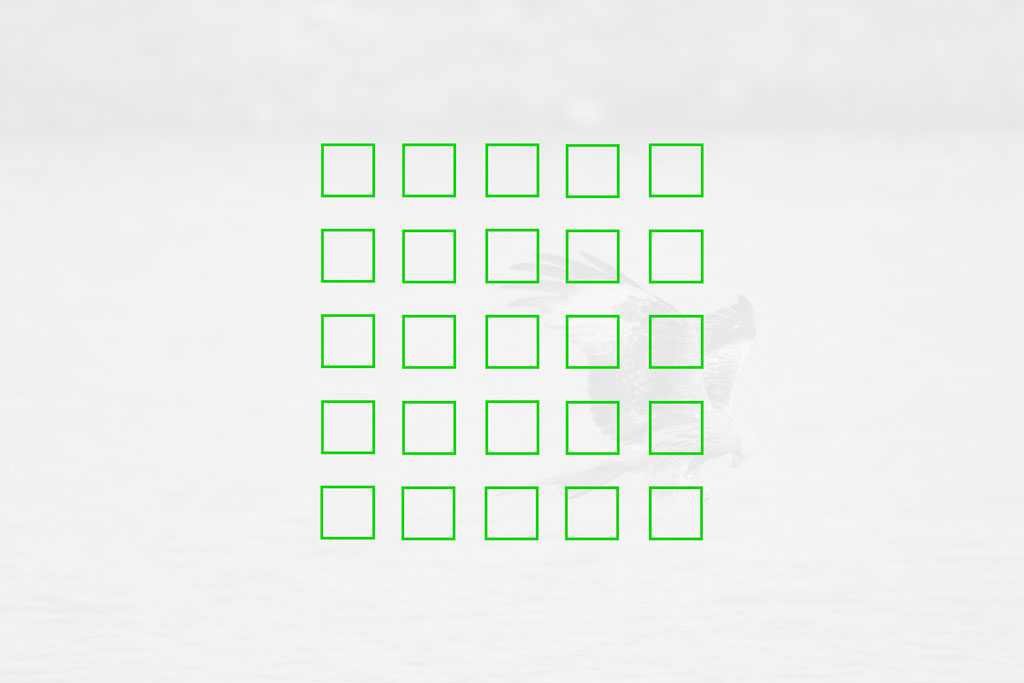

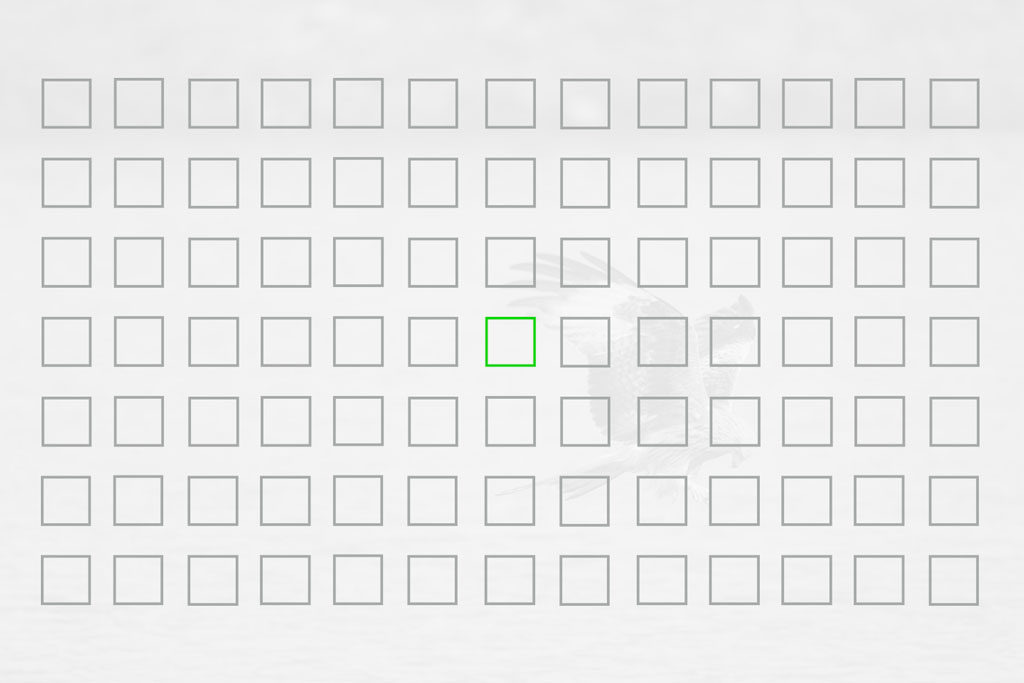
Concerning other settings, the X-T4 and X-T3 have a new AF Range Limiter function that allows you to set a minimum and maximum focus distance to which the AF motor of the lens can travel. This can be useful for certain applications such as wildlife, or when capturing details and you don’t want the camera to travel all the way to infinity or vice versa. There is one custom mode plus two presets. It works in C-AF only.
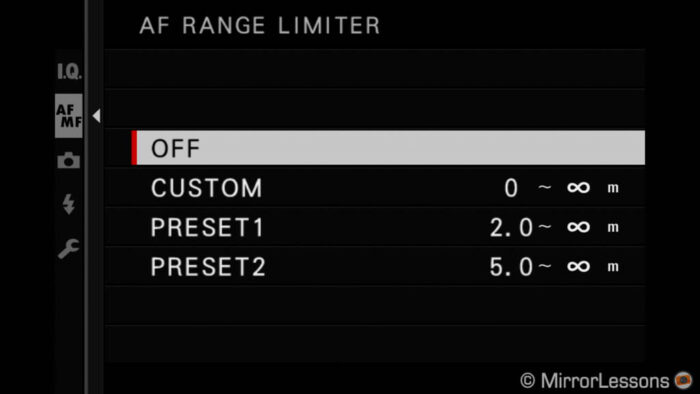
Both cameras can do Focus Bracketing where you can choose the number of frames, the focus step and interval. The T4 also has an Auto mode where you choose the Interval only (0 to 10s).
Fuji X-T4 Autofocus Test: how much better is it?
Wide Tracking is a mode that I rarely used on previous Fujifilm cameras. It allows you to lock onto a specific element of your composition and the camera should keep the focus on it no matter where it is in the frame. But it often proved unreliable, with the focus point jumping to something else.
With the X-T4, I found Wide Tracking has received the first real boost in performance and reliability. In fact, the camera’s overall ability to understand what and where the subject is has improved.
My recurrent test with birds in flight showed an improvement over the X-T3 when it comes to the precision and keeper rate, although just like the X-T3, you need to carefully pick the right settings. The Pre-Shoot mode and blackout-free live view with the electronic shutter is very helpful for birds.
I have published a dedicated article about my results for BIF with the X-T4, where I also explain which settings to use. Or you can watch the video below instead.
Fuji X-T4 Eye AF: is it reliable now?
To test face and eye detection, I asked my subject to do different movements such as walking straight to and from the camera, walking and turning 360˚ and zig-zagging.
What emerged is that the X-T4 has a better keeper rate, meaning that focus is faster and more accurate. The number of out-of-focus shots was approximately 20% less than on the X-T3.
In the test where the subject walked back and forth and turned around, the X-T4 was more precise at keeping the subject in focus at all times, switching to the head or body of the subject when she was facing the other way. It reminded me a bit of the Sony Real Time tracking autofocus although the latter analyses more layers and is more reliable overall.
Where both cameras struggled is when the subject is wearing glasses: there is a tendency for it to prefer the nose or frame rather than the eyes.
Even though face and eye detection and tracking have improved on the X-T4, the annoying tendency of seeing faces where there are none remains.
This is something I’ve seen on Fuji cameras since the beginning, and it’s still pretty much there four generation later. So if I don’t want the camera to focus on a person in my composition, or if there are temporarily no people in the frame, I always disable face/eye detection to avoid having the focus point suddenly jump from the subject I’m tracking because it thinks a flower looks exactly like a human being.
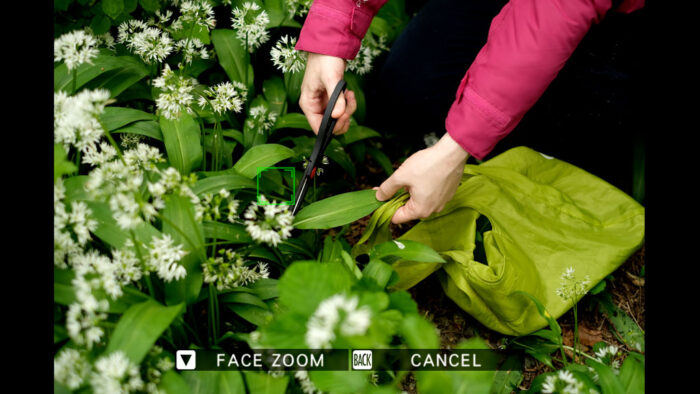
What about video?
There are fewer AF settings in movie mode: only single point or Multi area, but I found the latter more reliable on the X-T4.
On both cameras you can control the speed and responsiveness with two dedicated controls found in the AF-C Custom Setting (AF Speed and Tracking Sensitivity).
Face and eye detection don’t seem to benefit from a great improvement over its predecessor, partially because the X-T3 received the same algorithm update via firmware.
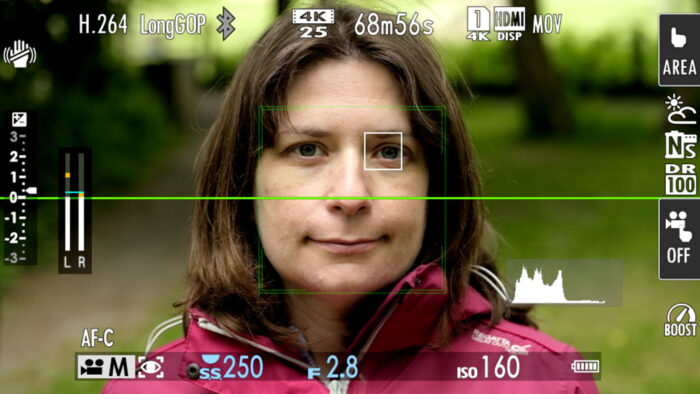
In my side by side test, it’s actually the X-T4 whose performance was slightly worse. When moving quickly towards the camera for example, it breathed back and forth when my face was close, a behaviour the X-T3 did not have.
When the subject turns around, both cameras are able to maintain focus on the head or body, but the performance is not constant and I got errors on both products (you can see the side-by-side test in our YouTube video from minute 26:56).
As for stills, both cameras have the annoying tendency to see a face where there isn’t one.
7. Image Quality Settings
The X-T4 introduces a new film simulation mode (colour profile) called Eterna Bleach Bypass, which emulates a traditional processing method for silver halide film. It is low in saturation but high in contrast. It’s not my favourite look, but you may like it.
Then we have the Classic Neg profile introduced with the X-Pro3, which is also not available on the X-T3.
The new Classic Neg profile, along with Bleach Bypass, is one of the most distinctive looks you can find on the camera. It has a similar contrast to Classic Chrome, but with more saturation and different colour hues that make the image look less natural, but no less charming. I wouldn’t use it every time, but I appreciate Fujifilm’s effort to make such a unique variety of colour profiles.
The X-T3 has the normal Chrome Effect that makes the reds deeper with more shades and details.
The X-T4 has a second mode called Color Chrome FX Blue. The blue variant does the same with blue shades such as the sky or anything that is blue.
Other tweaks have been added to the new model. For example, highlights and shadows can be controlled in 1/2 steps instead of 1 and have been combined together into one setting called Tone Curve. White Balance has a new White Priority and Ambience priority option depending on the type of artificial light you’re working with. Then you’ll find Clarity, which is another setting introduced with the X-Pro3.
If you love monochrome photos, the B&W adjustment gives the image any colour tinge you want. You have more freedom in comparison to the X-T3 with which you can only make it cooler or warmer.
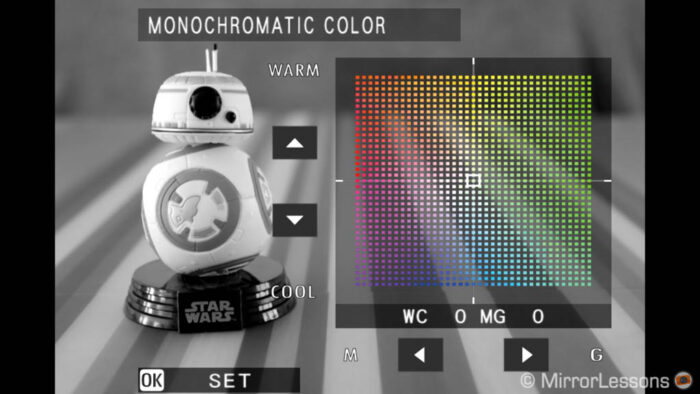
The X-T4 has a new HDR mode (same as the X-Pro3) that blends three images together and gives you more details in the highlights and shadows if you choose the highest setting (800%+). The final output available works in JPG.
The results are not bad but we found that there is a small loss in sharpness, and you have to be careful if there are movements in the frame.
We wrote a dedicated article about the HDR function on the X-T4, so I invite you to read it if you’re interested.
Both cameras record 14-bit RAW files and different compressions are available. The X-T3 can shoot in uncompressed or lossless compressed, whereas the X-T4 introduces a third option, compressed.
I did a quick dynamic range test to see if the compressed version would lose some information when recovering the shadows intensely, and as you can see, very little changes.
What surprised me is that the difference in file size between compressed and lossless compressed is almost non-existent (18.1MB vs 18.5MB only), so I don’t really see an advantage of using Compressed in terms of saving space or clearing the buffer more quickly. Lossless does fine and is certainly smaller than Uncompressed (55MB).
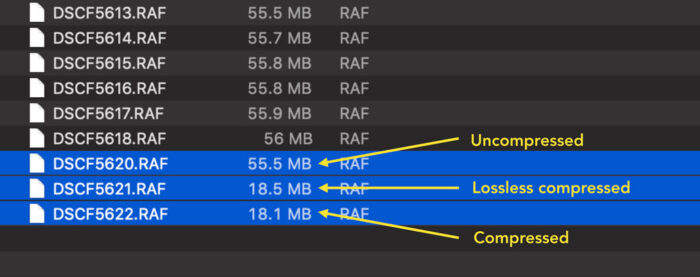
8. Video Recording
Both cameras can record 4K up to 60p and 200Mbps (1.18x crop), or 4K up to 30 and 400Mbps (no crop). You can have 10-bit 4:2:0 for internal recording and 10-bit 4:2:2 via HDMI.
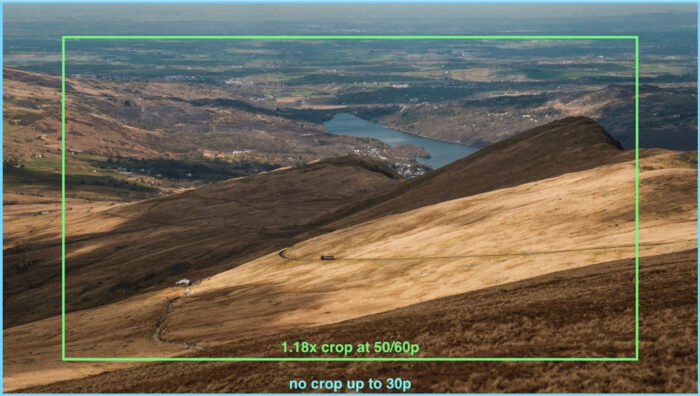
The maximum recording time per clip is 20 minutes at 50/60p, or 30 minutes up to 30p.
What’s new on the X-T4 is the maximum frame rate in Full HD, which reaches 240fps (10x slow motion effect). The X-T3 can do a maximum of 120fps, which is half that (5x slow motion effect). Note that the High Speed mode works with a 1.29x crop.
We wrote a dedicated article about the slow motion capabilities of the X-T4, and made a video for our YouTube channel that you can watch below. The bottom line is: 240fps gives you a sweet slow motion effect, but the loss of detai is severe in comparison to 120fps.
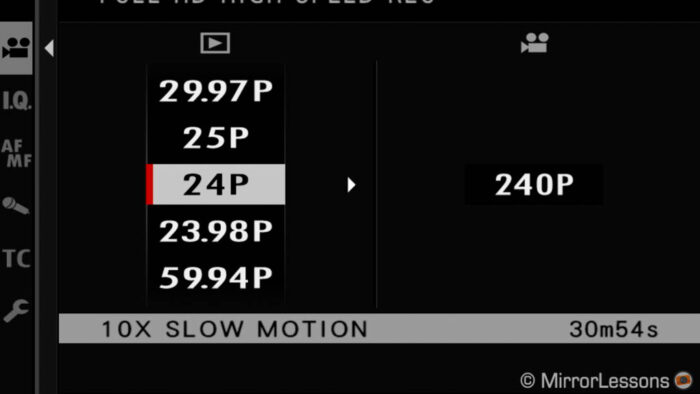
Both cameras do equally well with beautiful colour rendition. You can tweak the various profiles in camera to get something close to ready-to-use image. I particularly appreciate the Eterna profile which looks great with a bit of added contrast and saturation.
F-Log and HLG profiles are available on both cameras. Note that F-Log starts from a base of 640 ISO, whereas HLG doesn’t go below ISO 3200 which makes it a pain to use outdoors. Unlike the X-T3, the X-T4 has a F-Log View Assist which allows you to display normal contrast and colours on the screen when recording with Log.
Other improvements on the new camera include the possibility to record video on both cards at the same time. The X-T4 also has a MOV/H.264 LPCM setting in addition to MP4/H.264 AAC.
Another interesting new option allows you to even the crop applied to the sensor for all the various video modes. This means that a 1.29x crop is applied regardless of the video settings, so that you can have a constant field of view when recording 4K/30p and slow motion video for example.
Both have a 3.5mm audio input that can be used for microphones. On the X-T4 it doubles as a line input for other types of audio equipment.
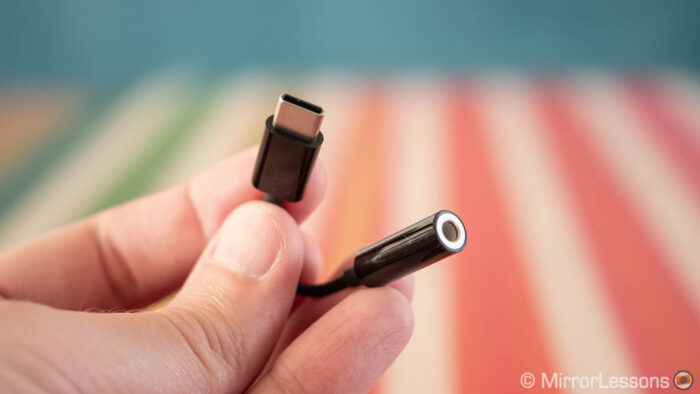
Note that there isn’t a 3.5mm headphone output on the X-T4, but you can use a USB-C adapter instead (included in the box). It seems that Fujifilm is adopting this solution more and more after first introducing it on the X-T30. This means however that you can’t use another accessory connected to the USB port at the same time (like a PowerBank), unless you can find a 2-in-1 adapter.
Do the X-T3 and X-T4 overheat?
One last thing I wanted to mention concerning the video performance is overheating. When recording with both cameras side by side in 4K/50p, the X-T4 started to show the overheat warning after 50 minutes.
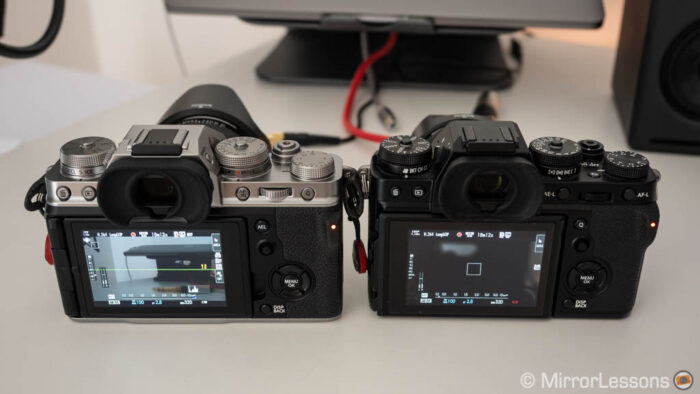
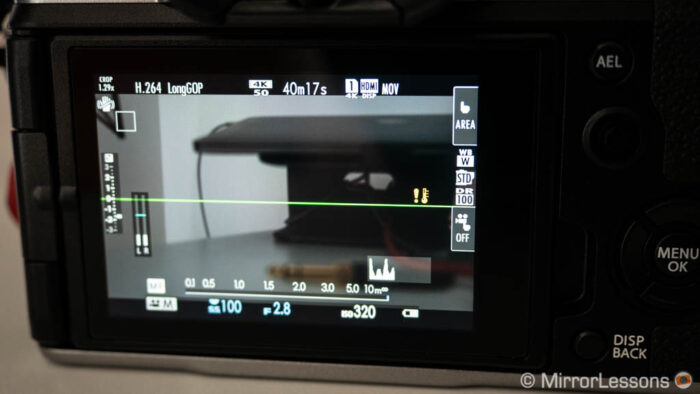
Soon after 60 minutes, the X-T4 shut down.
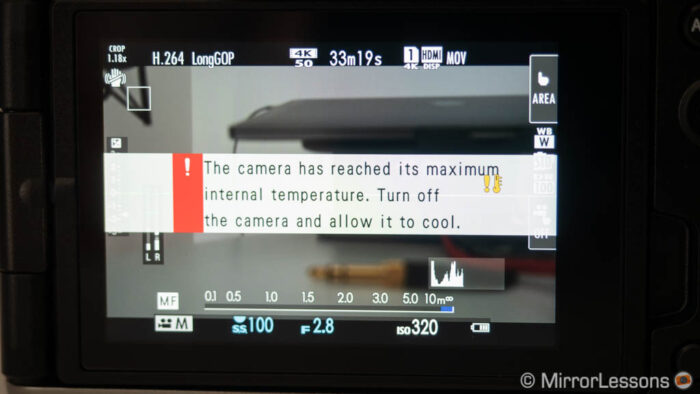
The room temperature was about 24˚C. The X-T3 on the other hand, while feeling almost as warm as the X-T3, never shut down even after more than two hours.
When recording 4K at 25p, both cameras were fine.
9. Menu and customisation
The menu system has the same structure and design on both cameras. It is cleverly organised into 5 main sections, with the optional My Menu where you can save your favourite settings.
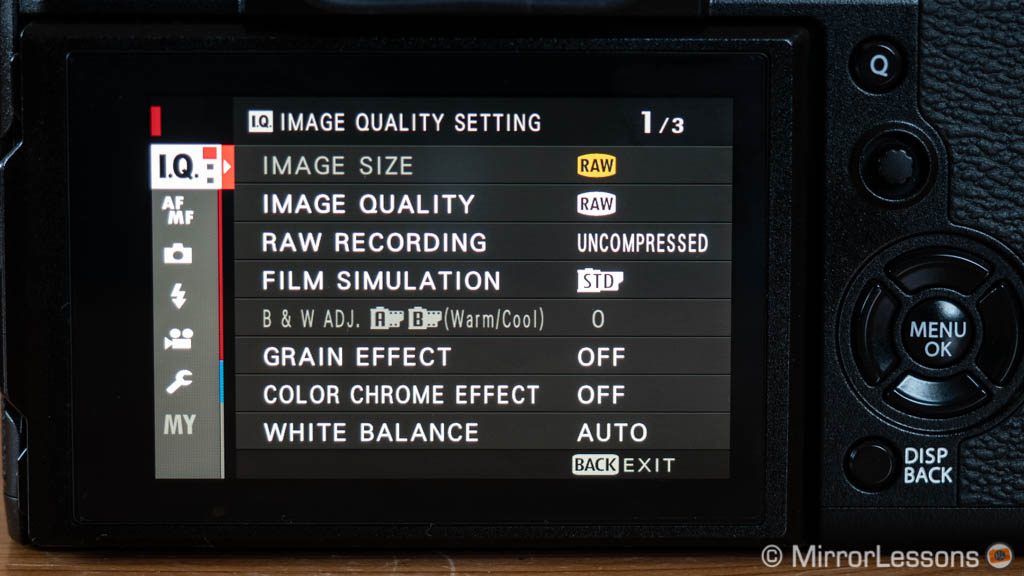
There are no drastic changes to it but here as well we find a few tweaks that, just like the button layout, facilitate hybrid shooting.
The most important change is that now, stills and video have a separate menu depending on the position of the STILL / VIDEO switch.
Fujifilm has also introduced a “Movie optimised control” option that allows you to adjust the exposure with the command dial or the touch screen. This allows you to keep the exposure settings separate between still and movie mode. Note that the X-T3 has a similar setting called Movie Silent Control that allows you to control all the settings via the touch screen.
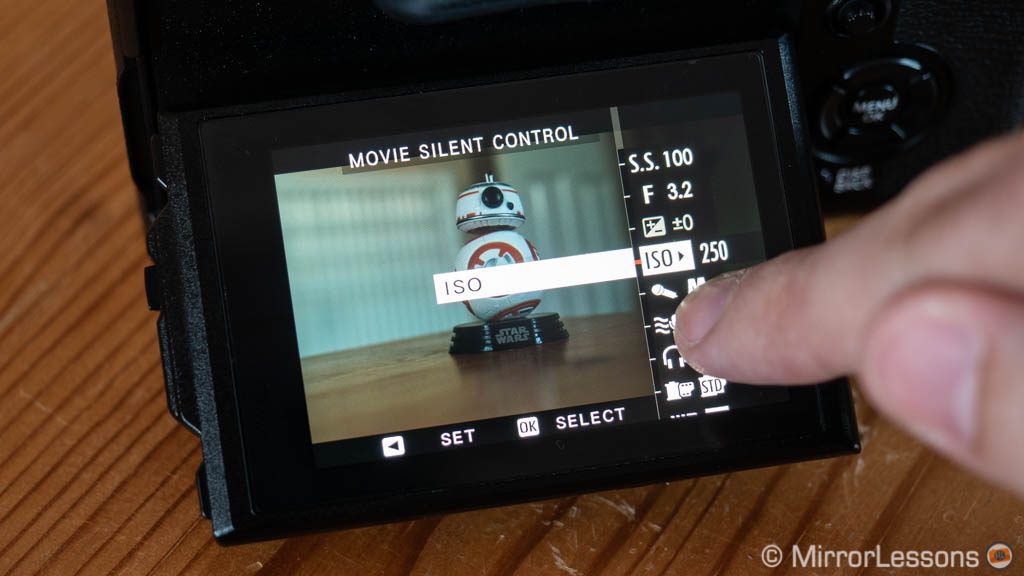
The X-T4 has 10 function buttons, which is one more than what you find on the X-T3. To that, you can add four touch functions on the LCD screen (flick left, right, up or down).
The command dials can also be configured and retain the same options, which include being an alternative to the default exposure dials on the camera and lens. The front dial can have up to three different settings (for example aperture, ISO, and exp. compensation) and you press it to toggle between the three. The rear dial can only have one setting assigned.
The Q button lets you access a quick menu. There are 16 blocks on the X-T3 that you can customise. On the X-T4, you can reduce the number of blocks to 12, 8 or 4 if you don’t need to access many parameters. You can also configure this separately for stills and video, and choose a plain black or transparent background.
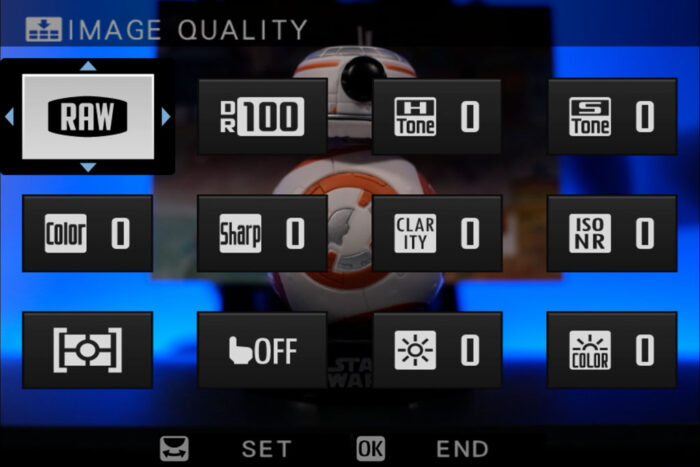
10. Price
The X-T3 can currently be found for around $1000, £900 or €990 (body only).
The new X-T4 is more expensive, starting at $1700, £1550 or €1650, which is higher than the launch price of the X-T3 in 2018.
Note that the above prices are as of September 2020 and include special deals available at the time for the X-T3.
In-Depth Video Review
Below you can watch our full review of the Fujifilm X-T4, which includes the comparison with the X-T3 and the information found throughout this entire article. Don’t forget to subscribe to our MirrorLessons YouTube channel!
Extra feedback and information
Dynamic range and high ISO examples
The X-T3 and X-T4 use the same APS-C sensor: it’s a 26.1MP BSI X-Trans IV chip with an ISO range of 160 to 12800. Thanks to the same X-Processor Pro engine, the extended sensitivity goes down to ISO 80 or up to ISO 51200.
I did some basic tests with the two cameras and as expected, the image quality is exactly the same! Below is an example of how the images look with an excessive 4 stop recovery, as well as some highlight recovery to give you an idea of what these cameras can do.
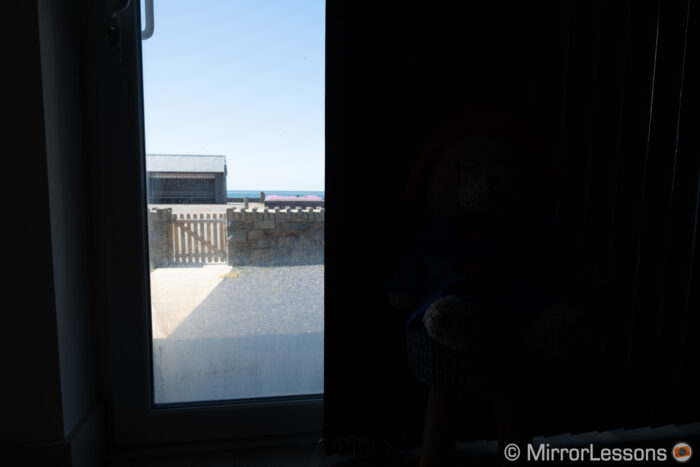

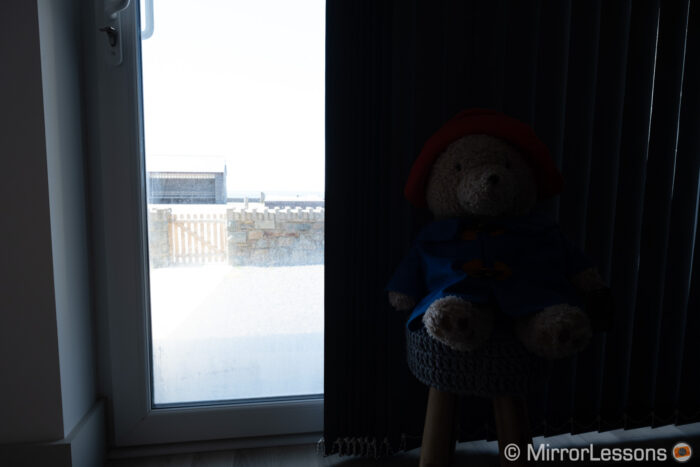
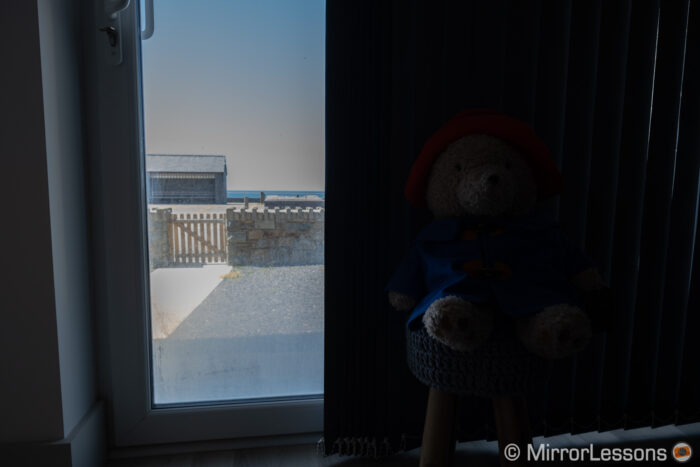
I didn’t find anything out of the ordinary when comparing the high ISO too. Same sensor, same noise ratio. Below you can see how the two models perform.
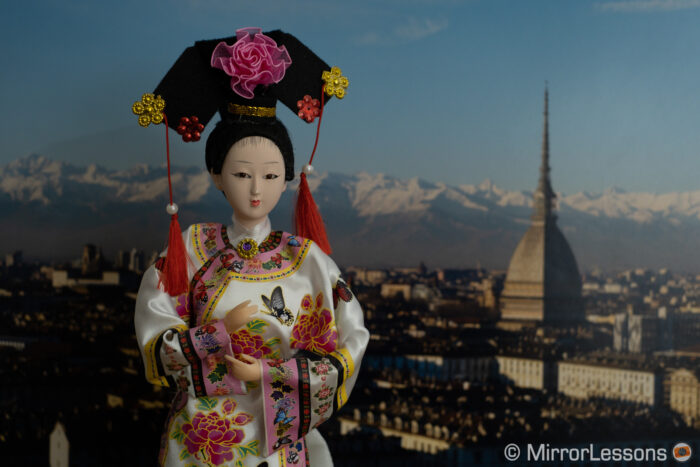
Note: the X-T3 has two steps (H and L) on the ISO dial that you can configure for the extended values. On the X-T4, you need to position the dial to C to access the entire range including the extended values.
Viewfinder
The viewfinder on the X-T4 is the same found in the X-T3, and it’s a very good EVF: it is bright, sharp, it has 3.69M dots and the refresh rate goes up to 100fps when the Boost mode is activated.
If you wear glasses like me, you won’t see the extreme corners, but I don’t find this to be a major problem.
The eyecup on the X-T4 has a locking mechanism so that it won’t dislodge itself.
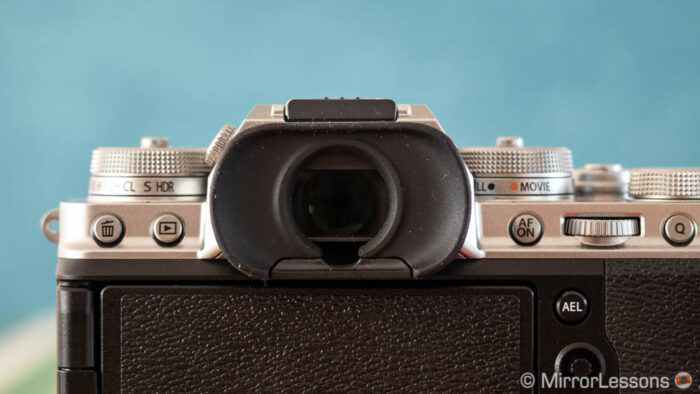
Extra Features
Both cameras share a number of extra functions such as:
- Intervalometer for time-lapses (the X-T4 has an extra “exposure smoothing” option)
- Multiple exposure and the X-T4 has more blending options (additive, average etc.)
- RAW Conversion to develop RAW files in camera and save the result as a JPG (you can also save it as a 16-bit or 8-bit Tiff on the X-T4)
- Panorama mode (JPG only)
- Bracketing: you can choose between AE, Focus, ISO, Film Simulation, White Balance or Dynamic Range. AE works up to ±3 Ev and 9 shots.
- Advanced Filters: 13 special effects for the JPG output including Toy Camera, Partial Colour, Low Key etc.
- Voice Memo: record an audio message that is linked to a specific picture in Playback mode.
A small detail I appreciate on the X-T4 is that it can save your self timer setting when turning off the camera so that you don’t have to activate it again when you turn it back on.
Concerning physical connections, the two cameras have:
- a 3.5mm microphone input
- a micro HDMI output
- a USB Type C port
- a 2.5mm remote input
- a flash sync port (front)
You’ll find all of them on the left side on the X-T4, whereas the 2.5mm remote input is on the right side on the X-T3.
Both cameras can be tethered via USB or used as a webcam after installing Fujifilm’s X Webcam software. I’ve used the X-T4 a few times for this purpose and it works quite well, especially now that the version 2 of the software allows you to control a few parameters from your computer. You can’t choose the video resolution output, and the quality is not outstanding, but it works fine for video calls.
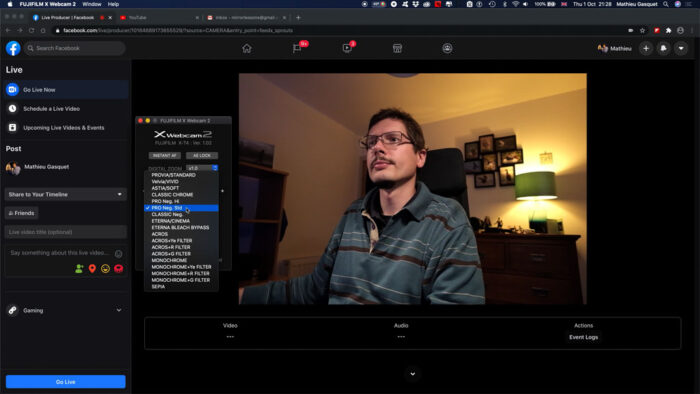
Last but not least, both cameras have WiFi and Bluetooth connectivity, which allow you to do the usual things such as remote control, geotagging or transfer JPG images on your phone. The connection process is a bit more straightforward than before, but the interaction between camera and smartphone continues to be too erratic. Sometimes it won’t connect, sometimes it drops the connection and doesn’t re-connect right away. There is room for improvement.
Fuji X-T3 vs X-T4 – Which one to get? Conclusion
It’s always easy to find something to criticise when we do in-depth reviews but, in all honesty, there aren’t a lot of negative aspects about the Fujifilm X-T4. It is a superb product that excels in every department.
The sensor and image processing is excellent and the RAW files are very flexible. The X-T3 already offers an excellent range of settings to customise the look of your image but with the extra parameters and profiles brought to the X-T4, you really have all the tools you need to create distinctive straight-out-of-camera JPGs.
The design is beautiful and it is a lovely camera to use thanks to the physical controls and customisation possibilities.
The continuous shooting speeds are the best in class and the video quality is ahead of many competitors.
If there is one area where the improvement is good but not excellent, it is the autofocus. While there is an increase in performance, you won’t always notice it and a few oddities remain like face and eye detection and the irritating tendency of finding faces where there are none.
With all that said, the X-T3 remains a very good all-rounder too and continues to receive firmware updates.
The major benefits of the new camera are the image stabilisation system that works with any lens, a significant improvement in battery life and the multi-angle LCD screen. You need to figure out if any of these three things are a must-have for your shooting needs, or if you are better off saving some money, especially since the X-T3 can be found at a discounted price.
Reminder: the links below are affiliate links. If you decided to buy something after clicking the link, we will receive a small commission.
Check price of the Fujifilm X-T3 on
Amazon | Amazon UK | B&H Photo | eBay
Check price of the Fujifilm X-T4 on
Amazon | Amazon UK | B&H Photo | eBay
Second-hand Fujifilm gear on
MPB US | MPB UK

